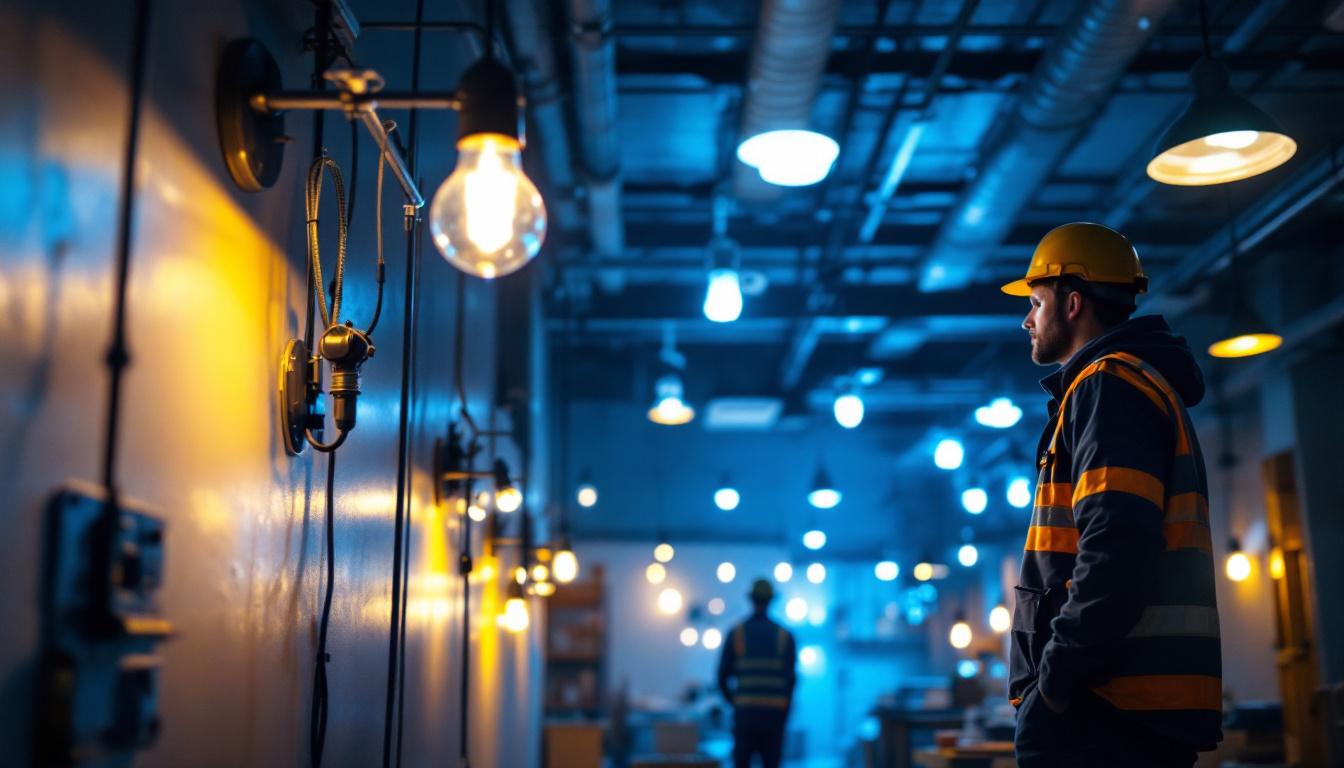
In the dynamic world of lighting design and installation, contractors often focus on the technical aspects of their projects. However, there are several elements that can be easily overlooked, which can significantly impact the overall success of a project. This article explores key areas that lighting contractors should pay attention to, particularly in relation to Max’s Warehouse, a leading supplier in the industry.
Effective communication with clients is paramount for any lighting contractor. Often, contractors may assume they understand the client’s vision without asking the right questions. This can lead to misinterpretations and ultimately, dissatisfaction with the final product. Engaging in thorough discussions about the client’s preferences, budget, and functional requirements can pave the way for a successful project.
Moreover, it is essential to listen actively. Clients may have specific ideas about aesthetics or functionality that they might not articulate clearly. By encouraging an open dialogue, contractors can uncover these hidden insights, ensuring the final design aligns closely with the client’s expectations. This process not only builds trust but also fosters a collaborative atmosphere where clients feel valued and understood. Regular check-ins and updates throughout the project can further enhance this relationship, allowing for adjustments and refinements based on ongoing feedback.
Another common oversight is the failure to conduct a comprehensive assessment of the space where the lighting will be installed. Factors such as room dimensions, existing architectural features, and natural light sources play a crucial role in determining the appropriate lighting solutions. Contractors should take the time to evaluate these elements thoroughly, as they can significantly influence the effectiveness of the lighting design.
Additionally, understanding how the space will be used is vital. For instance, a retail environment may require different lighting strategies compared to a residential setting. By tailoring the lighting design to the specific needs of the space, contractors can enhance functionality and aesthetics simultaneously. Furthermore, considering the psychological impact of lighting on occupants can lead to more thoughtful designs. For example, warmer tones may create a cozy atmosphere in a home, while brighter, cooler lights can energize a workspace. By integrating these considerations into their assessments, contractors can elevate the overall experience of the space, making it not just visually appealing but also conducive to the intended activities.
In the quest to provide cost-effective solutions, contractors may sometimes prioritize quantity over quality when selecting lighting fixtures. While it might be tempting to choose cheaper options to stay within budget, this can lead to long-term issues such as frequent replacements and maintenance challenges. Investing in high-quality fixtures not only improves durability but also enhances the overall appearance of the space.
Furthermore, the right fixtures can significantly impact energy efficiency. Many modern lighting options, such as LED technology, offer long-term savings on energy bills and reduced environmental impact. By educating clients about the benefits of quality fixtures, contractors can help them make informed decisions that will benefit them in the long run. High-quality fixtures often come with better warranties and support, which can provide peace of mind for clients who are concerned about the longevity of their investment. Additionally, aesthetically pleasing fixtures can elevate the design of a room, making it not just functional but also visually appealing, which can be a significant selling point for homeowners and businesses alike.
As technology continues to evolve, it is crucial for lighting contractors to stay updated on the latest advancements in lighting control systems and smart technology. Many contractors may overlook the importance of ensuring that the chosen fixtures are compatible with these systems. Integrating smart lighting solutions can enhance user experience, improve energy efficiency, and provide clients with greater control over their lighting environments. Smart fixtures can be programmed for various settings, allowing users to adjust brightness and color temperature to suit different activities, from relaxing evenings to productive work sessions.
Contractors should also consider the future scalability of the lighting design. As technology advances, clients may want to upgrade their systems. Ensuring that the initial installation is compatible with future technologies can save both time and money, making it a worthwhile consideration for contractors. For instance, wiring for dimmable fixtures or ensuring compatibility with voice-activated systems can make future upgrades seamless and less disruptive. Moreover, staying informed about emerging trends, such as the integration of lighting with home automation systems, can position contractors as forward-thinking professionals who provide comprehensive solutions tailored to the evolving needs of their clients.
Energy efficiency is a critical aspect of modern lighting design, yet many contractors may not fully understand the energy codes that apply to their projects. Each region may have specific regulations regarding energy consumption, and failing to comply can lead to costly penalties and project delays. It is essential for contractors to familiarize themselves with local codes and ensure that their designs meet or exceed these requirements.
Moreover, educating clients about energy-efficient options can enhance their satisfaction and help them save on operational costs. By presenting energy-efficient solutions, contractors can position themselves as knowledgeable professionals who prioritize sustainability.
In addition to adhering to energy codes, contractors should consider implementing sustainable practices throughout the project lifecycle. This includes selecting eco-friendly materials, minimizing waste during installation, and promoting recycling efforts. Clients are increasingly seeking sustainable solutions, and demonstrating a commitment to environmental responsibility can set contractors apart from their competitors.
Additionally, contractors can explore options for renewable energy sources, such as solar-powered lighting systems. These solutions not only reduce reliance on traditional energy sources but also appeal to environmentally conscious clients.
While functionality is a primary concern in lighting design, aesthetics should not be overlooked. Many contractors may focus solely on the technical aspects of lighting, neglecting the importance of creating a visually appealing environment. Striking the right balance between functionality and style is essential for achieving a successful lighting design.
Contractors should consider how different lighting styles can complement the overall design theme of the space. For instance, industrial-style fixtures may work well in a modern loft, while elegant chandeliers may be more suited for a classic dining room. By understanding the client’s vision and the architectural features of the space, contractors can create cohesive designs that enhance the overall ambiance.
Another often-overlooked aspect of lighting design is color temperature. The color temperature of light can significantly influence the mood and functionality of a space. For example, warmer color temperatures can create a cozy atmosphere in residential settings, while cooler temperatures may be more appropriate for workspaces where focus and productivity are essential.
Contractors should educate clients about the impact of color temperature and help them select the right options for their specific needs. This consideration can elevate the overall lighting experience and contribute to client satisfaction.
Even the best lighting fixtures can underperform if not installed correctly. Proper placement is critical to achieving the desired lighting effect. Contractors should take into account factors such as the height of ceilings, the purpose of the space, and the intended use of each fixture.
For instance, in a kitchen, task lighting should be strategically placed over work areas to enhance visibility. In contrast, ambient lighting should be evenly distributed to create a warm and inviting atmosphere. By carefully planning the placement of fixtures, contractors can ensure that their designs deliver optimal performance.
During the installation process, attention to detail is crucial. Contractors should ensure that all fixtures are securely mounted, wiring is properly connected, and controls are functioning as intended. Neglecting these details can lead to safety hazards and operational issues down the line.
Furthermore, conducting thorough inspections after installation can help identify any potential problems before the project is completed. This proactive approach can save time and resources, ultimately leading to a smoother project completion.
Once the installation is complete, many contractors may overlook the importance of providing clients with maintenance guidance. Educating clients about proper care for their lighting fixtures can extend their lifespan and maintain optimal performance. This includes advice on cleaning techniques, bulb replacement, and troubleshooting common issues.
By offering ongoing support, contractors can build lasting relationships with their clients and position themselves as trusted experts in the field. This not only enhances client satisfaction but can also lead to repeat business and referrals.
Feedback is a valuable tool for improvement, yet it is often neglected after project completion. Contractors should actively seek feedback from clients regarding their experiences with the lighting design and installation process. This can provide insights into areas for improvement and help contractors refine their practices.
Moreover, positive feedback can be leveraged as testimonials, enhancing the contractor’s reputation and credibility in the industry. By fostering a culture of open communication, contractors can continuously improve their services and better meet the needs of their clients.
Lighting contractors play a vital role in shaping the environments where people live and work. However, by overlooking key aspects such as client communication, fixture selection, energy efficiency, and post-installation support, contractors may miss opportunities to enhance their projects and build lasting client relationships. By paying attention to these often-overlooked elements, contractors can elevate their services, ensuring that they deliver not only functional but also aesthetically pleasing lighting solutions.
Max’s Warehouse stands as a valuable resource for contractors seeking high-quality lighting products and expert advice. By leveraging the insights shared in this article, lighting contractors can refine their practices, ultimately leading to more successful projects and satisfied clients.
Don’t let overlooked details dim the potential of your lighting projects. At LumenWholesale, we provide the resources and products you need to shine. Our spec-grade lighting solutions promise quality and value, ensuring your installations stand out for all the right reasons. With unbeatable wholesale prices and free shipping on bulk orders, we’re here to support your success every step of the way. Elevate your lighting game and discover wholesale lighting at the best value today.

Discover expert techniques and innovative strategies for lighting contractors using Christmas projection lights.

Discover how backdoor lighting enhances safety in lighting installations, reducing accidents by up to 30%.

Discover essential insights and expert advice from lighting contractors on maximizing the efficiency and aesthetics of Mhl lamps.

Discover how LED 4-foot bulbs can transform your lighting projects and help you secure more contracts.